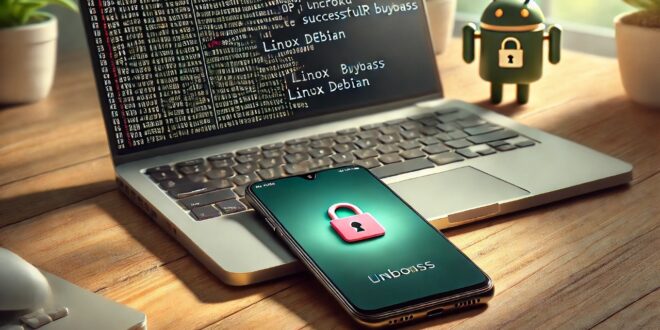In the realm of smartphone security, Factory Reset Protection (FRP) is a crucial feature designed to prevent unauthorized device access. While it serves as a protective measure, there are situations where legitimate users may find themselves locked out of their own devices due to forgotten credentials. This article explores the FRP Bypass Tool for Linux Debian, detailing its significance, functionality, and the steps involved in using it effectively.
1. Understanding FRP: What You Need to Know
1.1 What is Factory Reset Protection?
Factory Reset Protection (FRP) is a security feature introduced by Google in Android 5.1 (Lollipop) and later versions. It ensures that, after a factory reset, the device cannot be accessed without the original Google account credentials associated with the device. This security measure is particularly beneficial in cases of theft or loss, as it prevents unauthorized users from gaining access to sensitive data.
1.2 Why Use an FRP Bypass Tool?
While FRP serves a critical purpose, it can be a double-edged sword for legitimate users. You may be locked out if you forget your Google account password or purchase a second-hand device with FRP enabled. In such cases, an FRP Bypass Tool becomes essential, providing a means to regain access to your device without compromising security.
2. The Role of Linux Debian in FRP Bypass
Linux Debian is a versatile and stable operating system known for its robustness and security. Many developers and users prefer Debian for tasks like FRP bypass due to its open-source nature, reliability, and compatibility with various software tools. By utilizing an FRP Bypass Tool on Debian, users can efficiently navigate the bypass process while leveraging the power of the Linux environment.
3. Key Features of FRP Bypass Tools
When selecting an FRP Bypass Tool for Linux Debian, it’s essential to consider the following features:
3.1 User-Friendly Interface
A well-designed interface can significantly simplify the bypass process, making it accessible even for those with limited technical knowledge. Look for tools that offer precise instructions and a straightforward setup process.
3.2 Compatibility
Ensure that your chosen tool is compatible with various Android devices and versions. Some tools may only support specific brands or models, limiting their effectiveness.
3.3 Reliability and Success Rate
Opt for tools with a proven track record of successfully bypassing FRP locks. User reviews and testimonials can provide valuable insights into a tool’s reliability.
3.4 Regular Updates
Technology evolves rapidly, and new Android updates may change FRP bypass methods. Choose tools that receive regular updates to stay ahead of any changes in FRP security measures.
4. Popular FRP Bypass Tools for Linux Debian
Several FRP Bypass Tools are available for Linux Debian users. Here are some of the most popular options:
4.1 Odin3
Odin3 is primarily a flashing tool for Samsung devices but can bypass FRP locks on compatible models. It allows users to flash custom firmware and perform various operations on Samsung devices, including FRP bypass.
4.2 ADB and Fastboot
Android Debug Bridge (ADB) and Fastboot are command-line tools that enable communication between your device and computer. While they are not dedicated FRP bypass tools, they can be used with other methods to unlock devices.
4.3 FRP Bypass APK
Specific APK files can be downloaded and installed on Android devices to facilitate FRP bypass. However, users should exercise caution and download from reputable sources to avoid malware.
4.4 Samsung FRP Helper
Samsung FRP Helper is a specialized tool designed to assist users bypassing FRP on Samsung devices. It is known for its user-friendly interface and effectiveness in unlocking devices.
5. How to Bypass FRP Using a Tool on Linux Debian
Bypassing FRP on your Android device using a tool on Linux Debian involves several steps. Below is a general guide to help you through the process.
5.1 Prerequisites
Before you begin, ensure that you have the following:
- A compatible FRP bypass tool is installed on your Debian system.
- A USB cable to connect your Android device to your computer.
- A reliable internet connection.
5.2 Step-by-Step Guide
- Download and Install the FRP Bypass Tool
- Download the FRP bypass tool from the official website or a trusted source.
- Extract the downloaded file and install any necessary dependencies.
- Enable USB Debugging
- On your Android device, navigate to Settings > About Phone.
- Tap on Build Number seven times to enable Developer Options.
- Go back to Settings, find Developer Options, and enable USB Debugging.
- Connect Your Device to the Computer
- Use a USB cable to connect your Android device to your Debian system.
- Ensure that your computer recognizes the device.
- Launch the FRP Bypass Tool
- Open the installed FRP bypass tool on your Debian system.
- Follow the on-screen instructions to initiate the bypass process.
- Complete the Process
- Once the tool successfully bypasses the FRP lock, follow any additional instructions the software provides.
- Reboot your device to ensure the changes take effect.
5.3 Post-Bypass Steps
After successfully bypassing the FRP lock, consider the following actions:
- Reset Your Google Account Password: To enhance security, change your Google account password immediately.
- Back-Up Your Data: Regularly back up your device to avoid data loss in the future.
- Enable Device Encryption: This adds security to your device.
6. Risks and Considerations
While using an FRP Bypass Tool can be helpful, it’s essential to be aware of potential risks:
6.1 Warranty Voidance
Bypassing FRP may void the warranty on your device, especially if it involves flashing firmware or using unofficial tools.
6.2 Data Loss
Data loss is possible during the bypass process, so it’s crucial to back up your information before proceeding.
6.3 Legal Implications
Using FRP bypass tools may have legal implications, especially if you attempt to unlock a device that does not belong to you. Always ensure that you have the right to access the device.
7. Conclusion
The FRP Bypass Tool for Linux Debian offers a viable solution for users locked out of their devices due to Factory Reset Protection. By understanding the functionality of FRP and the tools available, users can effectively regain access to their smartphones while minimizing risks.
Always approach the bypass process cautiously, considering the potential implications on warranty, data integrity, and legality. With the right tools and knowledge, users can navigate FRP’s complexities and enjoy their Android devices’ full functionality.
This article is structured to be SEO-optimized, with relevant keywords integrated naturally throughout the text. If you need any adjustments or additional details, feel free to ask!
Frequently Asked Questions (FAQs)
What is Factory Reset Protection (FRP)?
Factory Reset Protection (FRP) is a security feature implemented by Google in Android devices starting from version 5.1 (Lollipop). It prevents unauthorized access to a device after a factory reset, requiring the original Google account credentials to unlock it. This feature is essential for protecting personal information in cases of theft or loss.
Why would I need to bypass FRP on my device?
You may need to bypass FRP if you need to remember credentials or purchase a second-hand device with FRP enabled. An FRP bypass tool can help you regain access to your device without compromising its security.
Can I use an FRP bypass tool on any Android device?
While many FRP bypass tools are compatible with Android devices, some may only support specific brands or models. It’s essential to check the compatibility of the tool you intend to use to ensure it works with your device.
Is it safe to use FRP bypass tools?
FRP bypass tools can be safe if you download them from reputable sources and follow the instructions carefully. However, be cautious, as some tools may contain malware or could lead to data loss. Always back up your data before attempting a bypass.
Will bypassing FRP void my device’s warranty?
Bypassing FRP may void your device’s warranty, especially if it involves using unofficial tools or flashing firmware. Always check the terms of your warranty and consider the risks before proceeding with a bypass.
How can I prevent getting locked out of my device in the future?
To avoid being locked out of your device, consider regularly updating your Google account password and enabling backup features. Additionally, keep your recovery information up to date to facilitate account recovery if you forget your credentials.
read this: Simplified eARC: A Comprehensive Guide to Enhanced Audio Connectivity
 Touch Blog
Touch Blog



